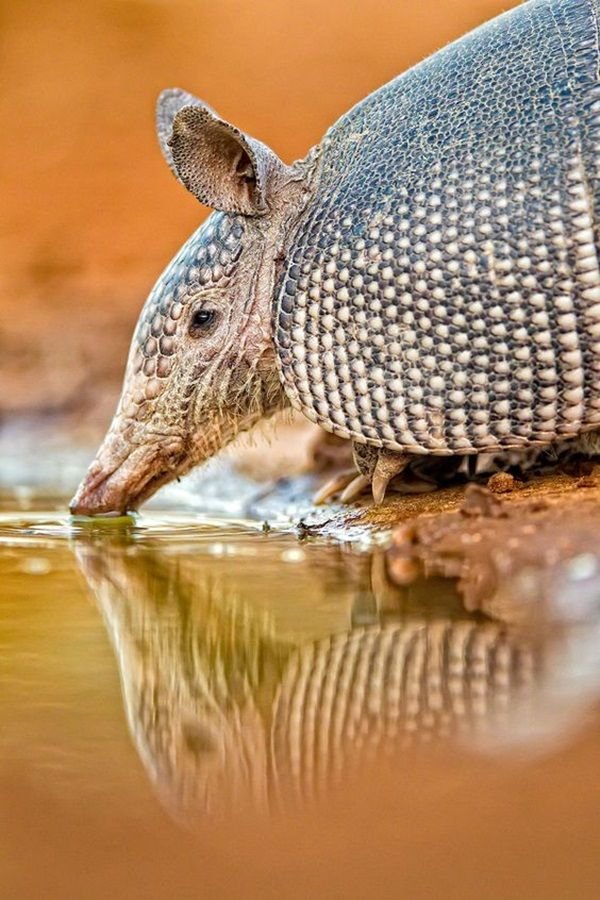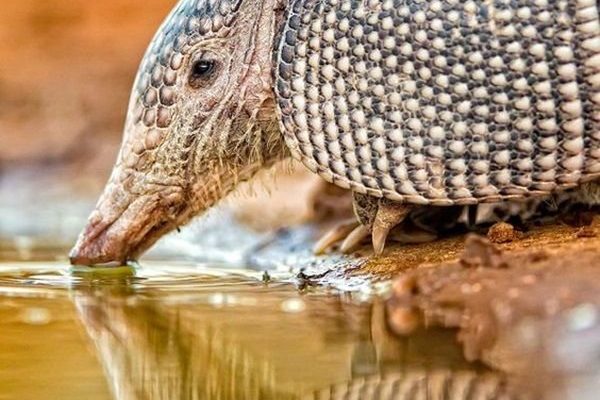
Picture them cruising through the grasslands or forests, digging into the soil like a skilled excavator. Every burrow they create and every meal they consume contributes to the health of their environment. Curious about how this all works? Let’s dive into the different ways armadillos impact their ecosystems and why they’re essential players in the grand theater of nature.
What Do Armadillos Eat and Why It Matters
You might be wondering what fuels these little armored mammals. Armadillos are primarily insectivores, meaning their diet is mainly composed of insects, grubs, and larvae. But they don’t stop there; they also munch on small plants and fruits. This varied diet helps keep insect populations in check, preventing any one species from becoming a nuisance.
When armadillos dig through the ground in search of food, they aerate the soil, much like a gardener loosens the earth to allow for healthier plant growth. This natural tilling can benefit nearby plants by improving soil texture and nutrient availability. It’s an interesting cycle: armadillos eat insects, promote healthy soil, and indirectly encourage the growth of plants, which in turn supports other wildlife.
Impact on Insect Populations
The insect world is a busy one, with species popping up everywhere. Armadillos play a critical role in controlling these populations. As they forage, they consume a significant number of beetles, ants, and termites. By keeping these insects in check, armadillos help maintain balance in the ecosystem.
If insect populations weren’t managed, we could see a surge in pests that can harm crops and plants. Think of armadillos as nature’s pest control, working tirelessly underground to ensure a healthy environment for the plants and animals around them.
Soil Aeration and Plant Growth
Armadillos are master diggers, which means they don’t just eat; they’re also enhancing the environment with every burrow they create. When they dig, they mix and aerate the soil, which is crucial for plant growth. Healthy soil is alive with microorganisms, and it needs good airflow to thrive.
More aeration leads to better water infiltration, which means plants can absorb moisture more effectively. This process supports a diverse range of flora, which in turn supports various types of fauna. By creating little pockets of life, armadillos are ensuring that their ecosystems remain vibrant and thriving.
Creating Habitats for Other Species
It’s not just plants that benefit from armadillos’ digging habits. When they excavate burrows, those abandoned homes can serve as habitats for other animals. Many smaller creatures, such as rabbits or certain reptiles, may take refuge in these burrows, making them part of a larger web of life.
So, in a way, armadillos are not just solo acts—they’re creating community spaces for various species to thrive. This interconnectedness is a beautiful reminder of how every creature, no matter how small, plays a role in the larger ecosystem.
The Armadillo’s Role in Seed Dispersal
You might be surprised to learn that armadillos also help with seed dispersal. While foraging for fruits or edible plants, they often consume seeds, which can later pass through their digestive systems. This process helps in spreading plant life across different areas.
When armadillos eat fruit and then move to new locations, they inadvertently plant seeds in fresh soil. This natural form of gardening promotes the growth of new plants in areas where they might not have thrived otherwise, adding to the overall richness of their environment.
Supporting Biodiversity
The intricate web of life depends on diversity for stability. Armadillos contribute to biodiversity not just by eating and digging but also by being a food source for predators. Birds of prey, coyotes, and even some larger snakes will hunt armadillos, incorporating them into the food chain.
Every time an armadillo is consumed, nutrients are recycled back into the ecosystem, fostering a rich nutrient cycle that supports various life forms. This chain reaction illustrates the importance of even the smallest creatures in maintaining the health of their habitats.
Challenges Armadillos Face
Despite their vital contributions, armadillos face numerous challenges in today’s world. Habitat loss due to urbanization, agriculture, and climate change poses significant threats to their populations. As their homes disappear, so does their ability to perform their essential roles in ecosystems.
In addition to habitat loss, armadillos are susceptible to diseases and are often victims of road traffic collisions. In many regions, their populations are declining, raising concerns for their survival and the health of the ecosystems they help support.
The Importance of Conservation
Conservation efforts are essential to help protect armadillos and their habitats. By raising awareness about their role in the ecosystem, we can encourage communities to take action to preserve the environments where these creatures thrive. Whether it’s through creating wildlife corridors, promoting sustainable land use, or supporting local conservation initiatives, every bit helps.
Here’s something to ponder: if we lose armadillos, what ripple effects might we see in their ecosystems? Protecting these quirky creatures means we’re ensuring the health and stability of their homes, which ultimately benefits all of us.
Final Thoughts
Armadillos might not be the most glamorous animals out there, but their role in the ecosystem is nothing short of fascinating. From managing insect populations to aiding in seed dispersal and creating habitats for others, every aspect of their lives contributes to the wealth of life around them.
By understanding and appreciating the importance of armadillos, we can all play a part in protecting these unique creatures and the delicate ecosystems they help sustain. So, the next time you hear about an armadillo, remember: it’s not just a quirky critter; it’s a crucial player in the story of our planet.

